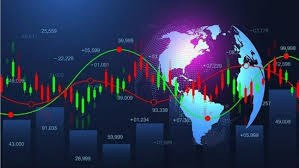Choosing the right brokerage platform is crucial for success in Contracts for Difference (CFDs) trading. A brokerage platform serves as the gateway to the financial markets, facilitating trade execution, providing market access, and offering essential tools and resources for traders. This article explores key factors to consider when selecting a cfd how it works brokerage platform to suit your trading needs and preferences.
Regulatory Compliance and Security
First and foremost, ensure that the CFD brokerage platform is regulated by reputable financial authorities. Regulatory oversight ensures adherence to strict standards, including client fund segregation, financial transparency, and dispute resolution mechanisms. Trusted regulatory bodies include the Financial Conduct Authority (FCA) in the UK, the Australian Securities and Investments Commission (ASIC), and the Cyprus Securities and Exchange Commission (CySEC). Verify the broker’s regulatory status and licenses to safeguard your investments and trading activities.
Range of Tradable Assets
Evaluate the variety of financial instruments offered by the brokerage platform. A diverse range of CFDs allows traders to access global markets, including stocks, indices, forex pairs, commodities, and cryptocurrencies. Consider your trading preferences and objectives—whether you focus on specific asset classes or seek broad market exposure. Additionally, assess the availability of popular assets, liquidity, and trading hours to align with your trading strategy and market interests.
Trading Costs and Fees
Compare trading costs and fees associated with CFD trading on different brokerage platforms. Typical fees include spreads (the difference between buying and selling prices), overnight financing charges (for positions held overnight), and commissions on certain trades. Low trading costs can significantly impact your profitability, especially for high-frequency traders or those executing large volumes. Additionally, inquire about non-trading fees, such as withdrawal fees, account maintenance fees, and inactivity fees, to avoid unexpected charges.
Trading Platforms and Technology
An intuitive and reliable trading platform is essential for executing trades swiftly and efficiently. Evaluate the brokerage platform’s trading software, ensuring it offers advanced charting tools, real-time market data, technical analysis indicators, and customizable interface options. Popular trading platforms like MetaTrader 4 (MT4) and MetaTrader 5 (MT5) are widely used for their user-friendly interfaces, comprehensive features, and compatibility across devices (desktop, web, and mobile).
Customer Support and Service
Quality customer support is crucial for resolving issues promptly and receiving assistance when needed. Evaluate the brokerage platform’s customer service channels, such as live chat, email support, and telephone assistance. Consider response times, availability of support during trading hours, and language support to ensure effective communication and assistance tailored to your needs.
Educational Resources and Research Tools
Access to educational resources and research tools can enhance your trading knowledge and decision-making capabilities. Choose a brokerage platform that provides comprehensive educational materials, including tutorials, webinars, market analysis, and trading guides. Research tools such as economic calendars, news feeds, and sentiment analysis can provide valuable insights into market trends and events impacting asset prices.
Reputation and Reviews
Research the reputation and reviews of the brokerage platform within the trading community and industry. Seek feedback from experienced traders, review online forums, and check independent review websites to gauge the platform’s reliability, customer satisfaction, and track record. Pay attention to factors such as order execution speed, platform stability, and transparency in trade execution.
Conclusion
Selecting the right CFD brokerage platform requires careful consideration of regulatory compliance, range of tradable assets, trading costs, technology infrastructure, customer support, educational resources, and overall reputation. By conducting thorough research and evaluating platforms based on your trading preferences and objectives, you can choose a brokerage platform that aligns with your needs and enhances your trading experience. Prioritize security, functionality, and support to maximize trading opportunities and navigate the dynamic landscape of CFD markets effectively. Always consider seeking professional advice or consulting with experienced traders to make informed decisions and optimize your trading journey.




